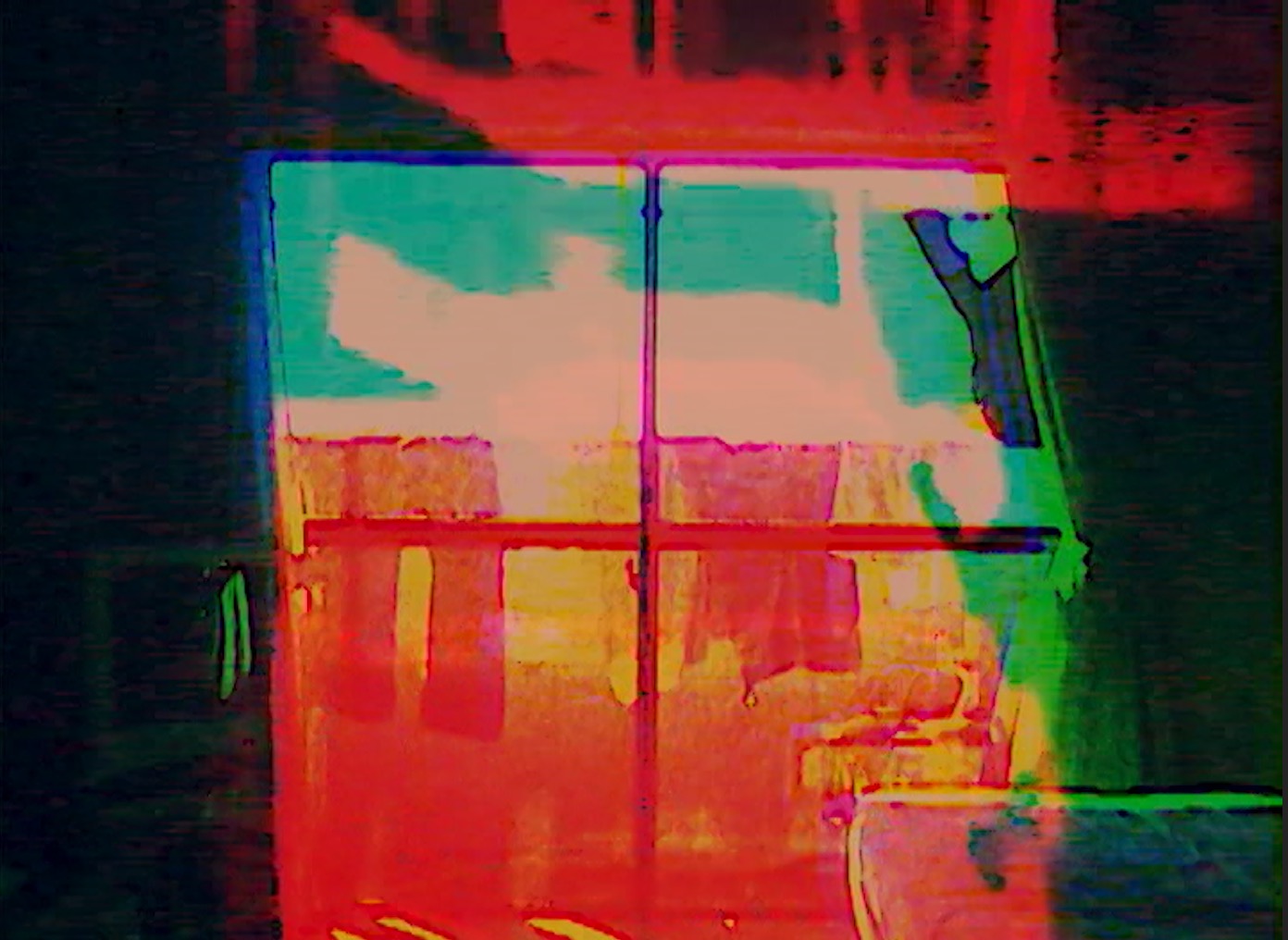Higashi-Nippori, 2024
RGB filtered B & W Super-8 film, color, sound, total running time 5 minutes
Link
Higashi Nippori investigates the difficulties of making something straightforward. Three black and white Super-8 film cartridges were shot in single takes from a fixed position in an apartment in Tokyo, Japan, for each of the film's three sections.
The film's first section was shot at high speed, showing clothes drying in the wind on a laundry balcony. The second section is a time-lapse of three consecutive days of the sun rising behind the living room's sliding paper screen. The third section is a view from the apartment's balcony, looking down at treetops moving in the wind.
Although clothes drying, the sun rising, and the wind blowing a treetop seem like uncomplicated topics for a film, numerous factors problematized the objective of creating one color take, from the camera and tripod vibrating, gradually shifting its position on the floor to the elements in front of the camera moving.
The soundtrack is the narrative backbone of the work and forms a domestic counterpoint to the shifting of distorted visuals, even though the audio is highly fragmented and is constructed from recordings made at different times while sitting still on the apartment's living room floor or standing on the laundry balcony. As with the images that don't precisely combine, the addition of disparate sounds—rice cooking, a heavy metal band in a nearby park, a passing recycling truck, a child’s tantrum, cicadas, crows, and an answering machine message from FedEx—enhance the surreal qualities of the film and foregrounds the contrast between inside and outside, private and public.
The three pieces of film footage periodically come together in proper registration and create a singular image, along with a plausible audio accompaniment; however, most of the time, the elements that comprise this film are in various disjunctive states and call attention to the film's assembled nature.










































